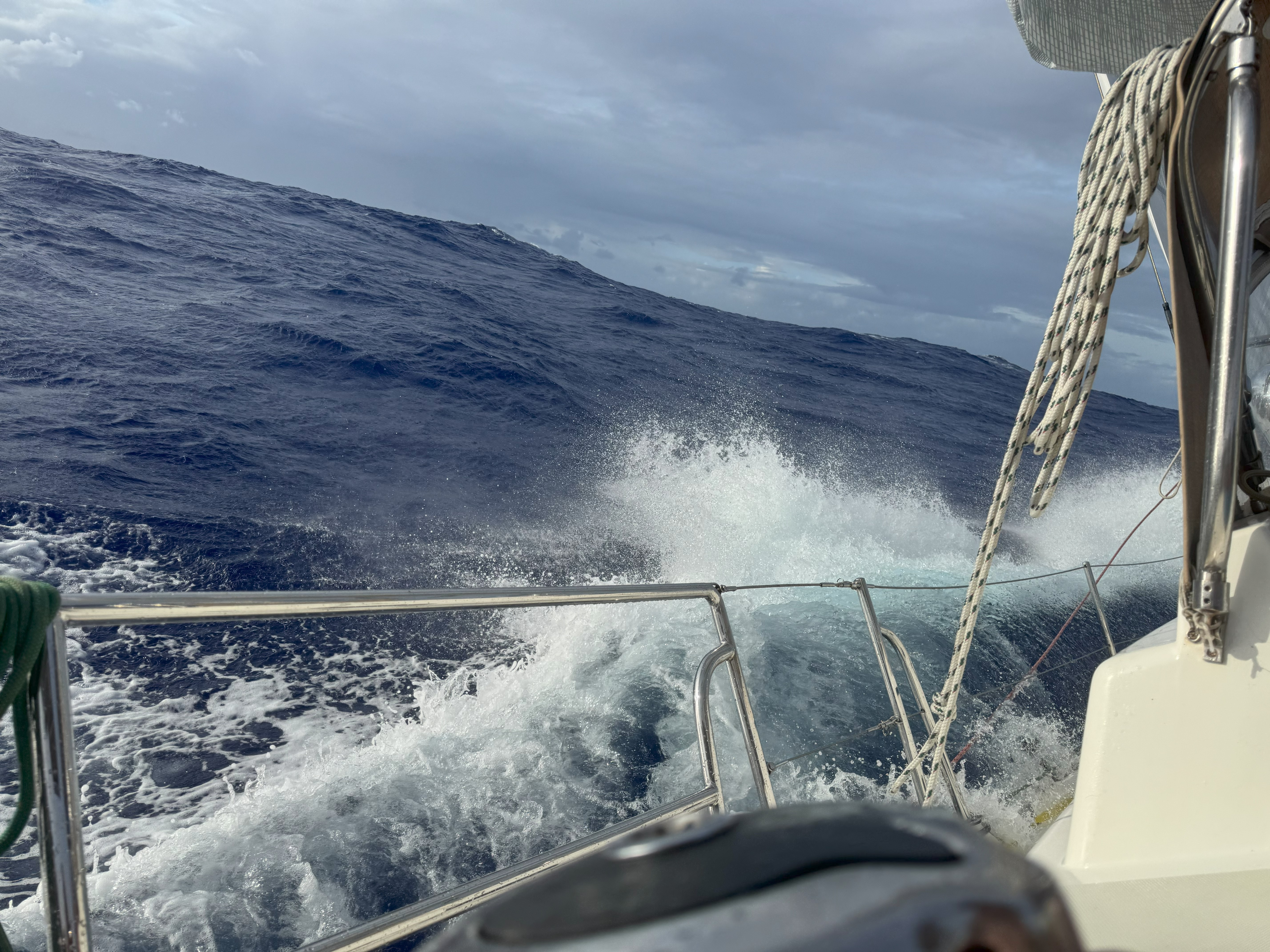There’s something about the ocean that reminds you how small you are. It’s really humbling. When I said yes to my first ocean passage—from New Zealand to Tahiti—I thought I was prepared. I reviewed the manual and notes from my three-day sailing course, learned the essential lingo, practiced knots, and packed the recommended gear. But nothing truly prepares you for the passage until you leave the dock.
Before We Set Sail
Wanderlust was ready to go. The deck was scrubbed, the teak freshly oiled, and the stainless steel sparkled. Final prep was done. The crew was assembled. We had provisions stowed and a meal plan that looked reasonable. Cooking and watch schedules were set.
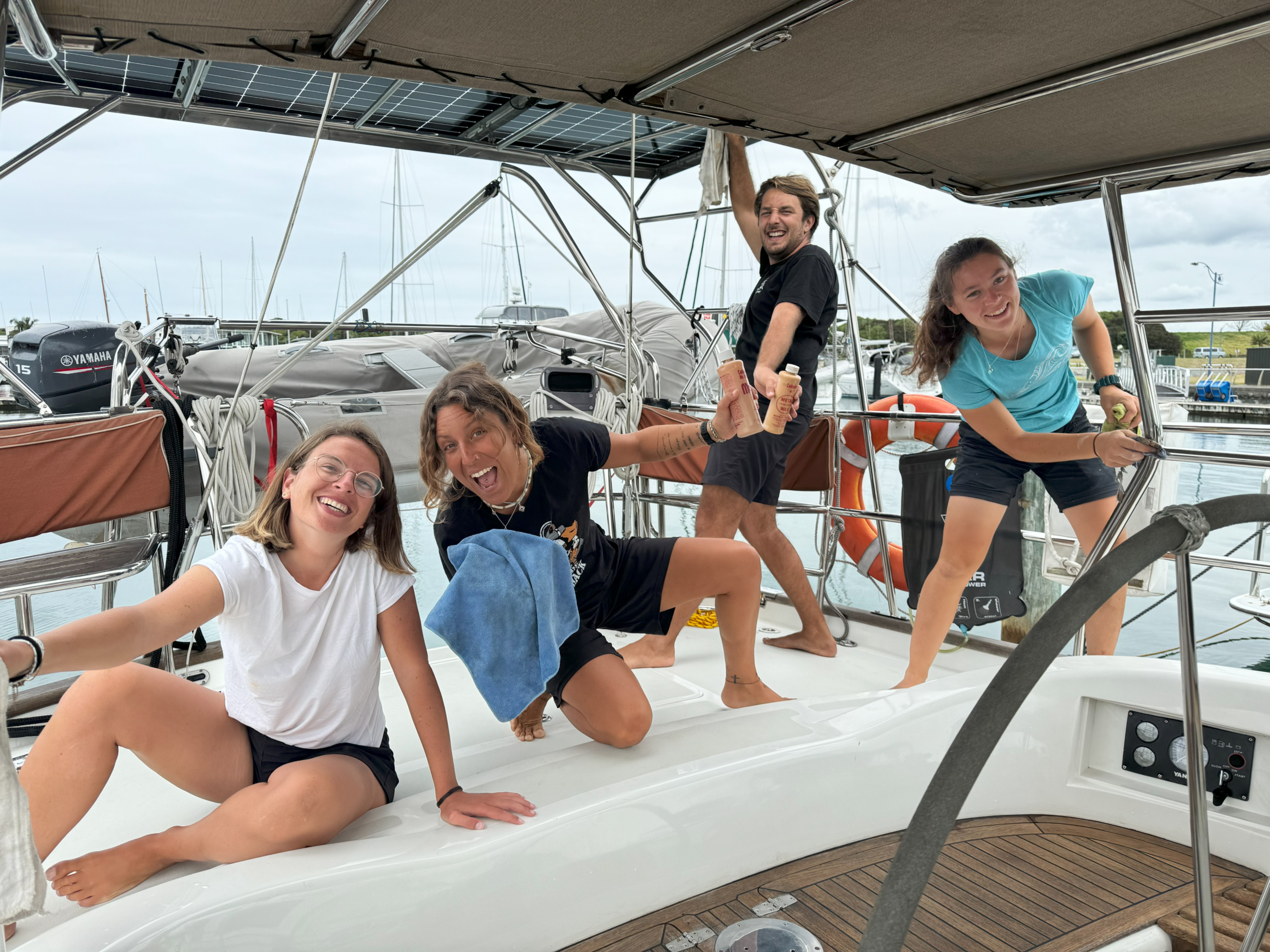
Our crew was a mix of French, Italian, and Kiwi would-be sailors, each looking for their own adventure. We laughed, shared stories, and took turns cooking to show off a bit of our homegrown flavors. We were getting to know one another, and spirits were high.
Captain Walt was the only true sailor among us, with more than 25,000 nautical miles of blue water experience to his name. Before long, we were leaning on him, not just for coaching and guidance, but also to catch and correct our inevitable missteps. He shared safety protocols and best practices both on deck and below, introduced us to the boat’s systems, and walked us through the technology he uses for weather and passage planning. It was clear he had a wealth of knowledge to offer and could teach us as much - and as deeply - as we wanted to learn.
Walt also pointed out the resources lining Wanderlust’s bookcases and sketched out what we could expect on passage, all while watching for the safest weather window for departure. He told stories from his solo crossings and shared teachable moments, lessons learned the hard way by previous crew, both on deck and in the galley. We listened (mostly) and tried to absorb the realities of a three-week upwind ocean crossing. We had faith in the captain’s leadership and in Wanderlust’s blue water pedigree. We stayed eager and enthusiastic, even if we couldn’t quite picture what it would feel like to be heeled, our stomachs asking questions our brains couldn’t yet answer.
Welcome to the Real Passage
It didn’t take long for reality to hit—in the form of wind, waves, and weather. With Wanderlust at a 12-to-15-degree heel, even the simplest task could be an adventure, and walking through the cabin felt like navigating a tilted carnival funhouse. Strategically placed handholds, once seen as merely decorative, became truly handy. And the galley? Bracing to stir, chop, and even do dishes was a challenge.
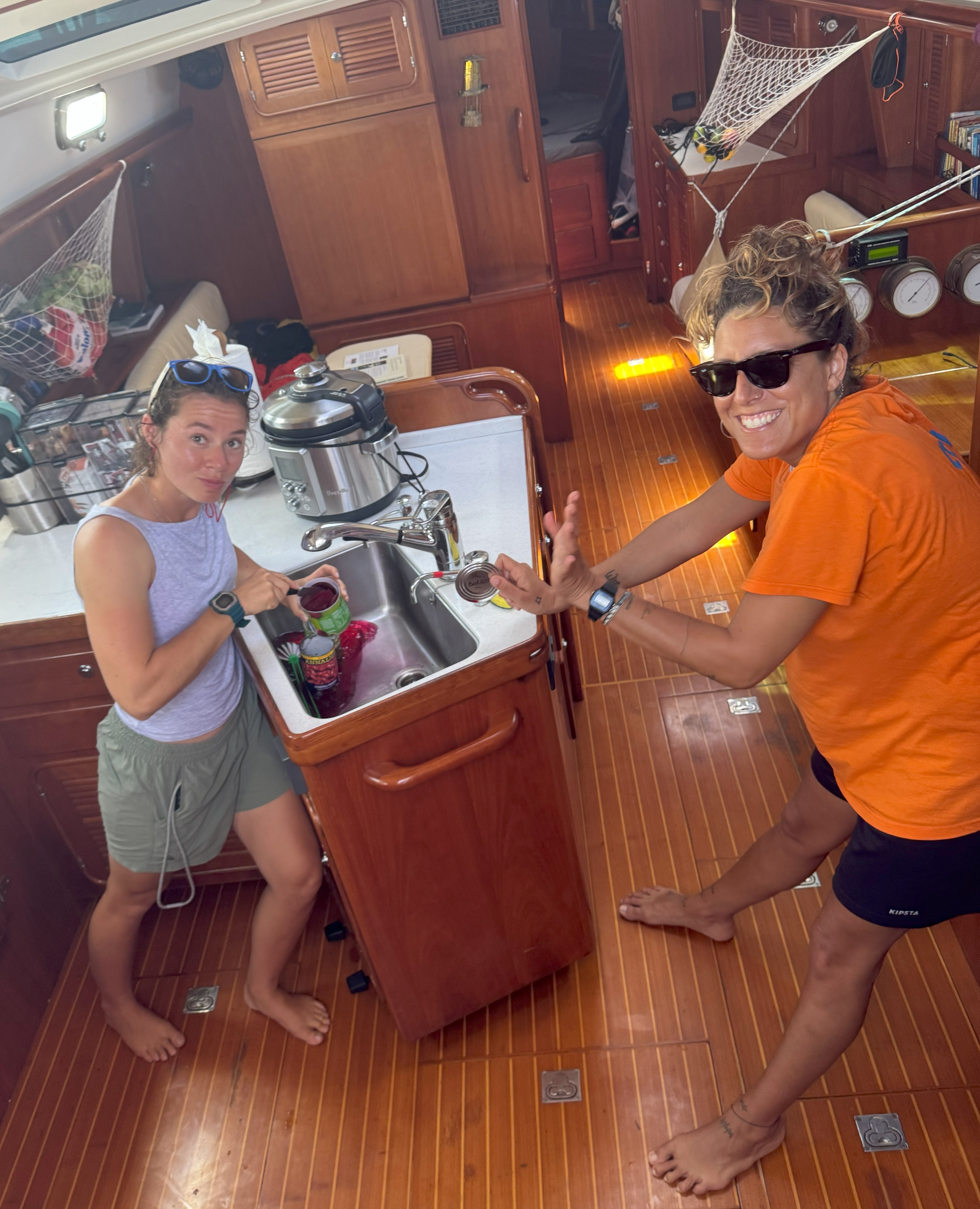
The meal plan we had so confidently crafted was way too complicated. Turns out, upwind sailing in gusty weather doesn’t pair well with ambitious cooking. We pivoted to one-pot meals, just like Captain Walt had recommended: hearty, simple, and way easier to manage underway. Snacks and pre-made grazing foods became our go-to’s.
Oh, did I mention the crew members who grappled day after day with seasickness? Inconvenient, messy, and an overwhelming surprise to those who thought their previous boating experience would hold them in better stead. Midnight watches in wind and rain didn’t help matters, but they did teach us the value of foul weather gear, tethers, and wearing your PFD.
Each crew member coped in their own way—with varying degrees of good humor—but all met their watch and galley responsibilities. There was a collective sigh of relief when Captain Walt hove to for a day so the crew could rest and recover, even though it made the passage a bit longer.
We stumbled. We slipped. We shook fists at the wind. And we tried to laugh anyway. I knew that Walt and Wanderlust would get us safely to our destination.
Heads, Hatches, and Humility
Every passage comes with its surprises. Ours? A clogged aft head, one shared by four people. Halfway through the trip, it gave up entirely, leaving six people to share the only other head on board. We crossed our fingers and hoped that one working toilet would hold out for the rest of the journey… no one wanted to contemplate the only remaining option: a bucket!
We also discovered a couple of leaky hatches, not catastrophic, just enough to make sole boards slippery. And the importance of securing everything down? If it wasn’t stowed, latched, or tied down, it could easily go flying. The boat doesn’t care if it’s your toothbrush, your lunch, a winch handle, or your dignity. At best, it’ll slide across the cabin; at worst, it’ll be an airborne missile with the potential to damage or harm.
But here’s the thing: when you’re living in close quarters, you learn fast. We each figured out how to move more efficiently; the old sailor’s mantra became our own: one hand for you, one hand for the boat. We regained our sense of humor, even when things got wonky, wet, or simply weird.
Where Fear Gives Way to Rhythm
I’ll be honest: I was scared. Not all the time, but in those quiet moments when the sea felt ominous and endless, I questioned myself. I’d look out at nothing but waves and sky and wonder: Do I really trust this boat? This crew? Myself?
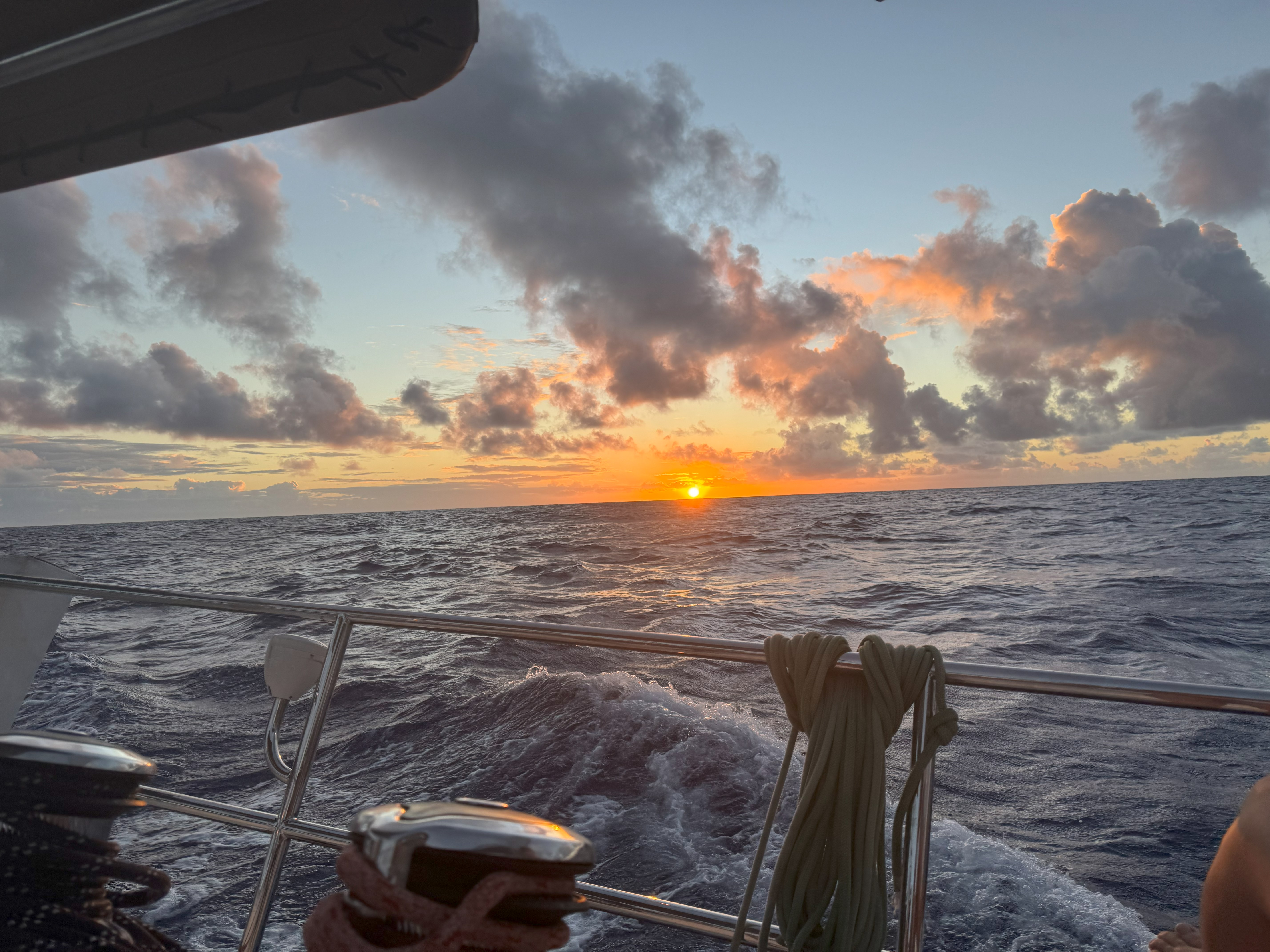
While the squally weather had me nervously tied up in knots, Wanderlust easily hit her stride: she dug in and handled the wind and waves just as she was designed to do. Feeling her mastery of the seas helped, and over those first few days, something shifted. I found a rhythm. The watch schedule settled into an anticipated routine. I learned to move with the boat instead of bracing against her. Grabbing for handholds became second nature. I stopped panicking at the unfamiliar and kept learning and adapting.
The night watches also helped. There’s something about being alone with the stars and the sound of water rushing past the hull that rewires your perspective. Maybe it was the moonlight on the waves or the sunrise at the end of a watch that cracked something open in me. I began to feel, not just safe, but capable.
Confidence didn’t land all at once. It crept quietly with little wins: handling a line on time, making coffee in a choppy sea, knowing instinctively what to grab when the boat lurched. I started to laugh more. I started to enjoy it.
The nerves didn’t vanish completely, but they got less of my attention.
Land Ho! Tahiti on the Horizon
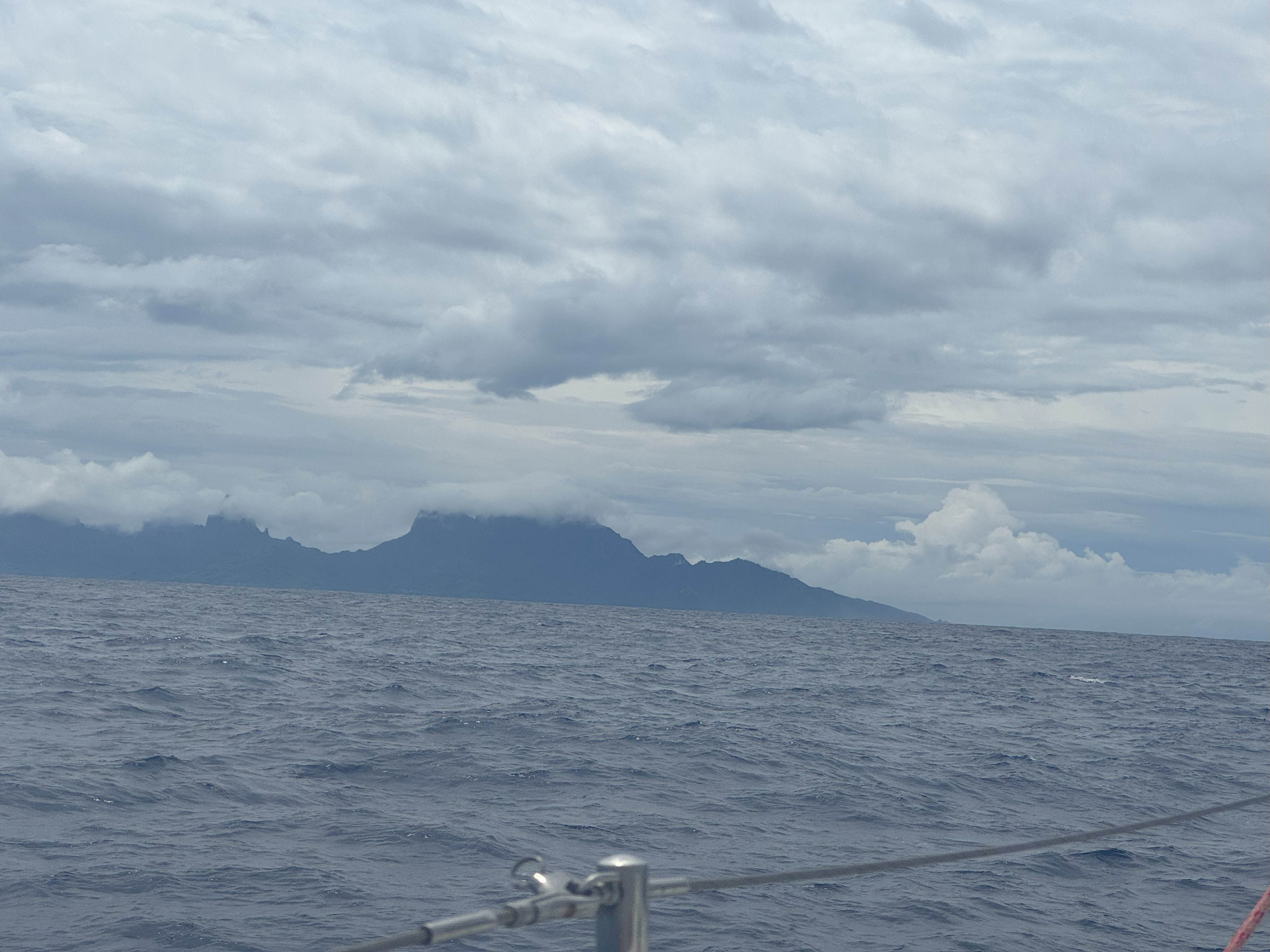
Eighteen days. That’s how long it took. Eighteen days of wind, waves, wonder, and bouts of seasickness. And then, land ho! Tahiti rose from the horizon: lush, jagged peaks, impossibly green. It barely looked real. Wanderlust rocked gently as we eased into Marina Taina, and suddenly, it was real. We had done it.
We jumped up and down like kids. There was shouting, hugging, laughing—the kind that comes from deep relief and pure joy. And to think this was a bunch of people I barely knew three weeks earlier. I was so proud that we had done it.
But more than pride, I felt this quiet, unexpected shift inside me. It wasn’t just ‘I got this.’ It was ‘I get this’...the why of it all. Not just the destination, but the journey itself. The challenge, the camaraderie, the raw beauty of the ocean, the lessons hidden in hard moments, that’s the real magic.
This passage gave me peace I didn’t know I needed, a new perspective on what I’m capable of, and deep gratitude—not only for the sea, the sky, the captain, the crew, and Wanderlust, but also for every messy, meaningful moment the passage had to offer.
